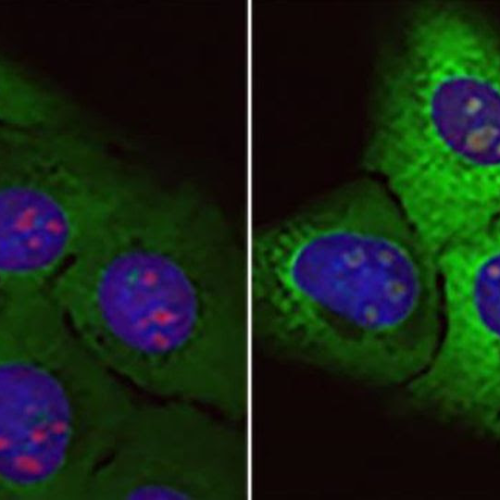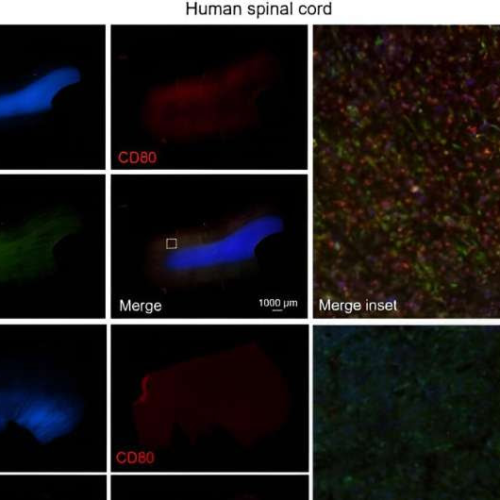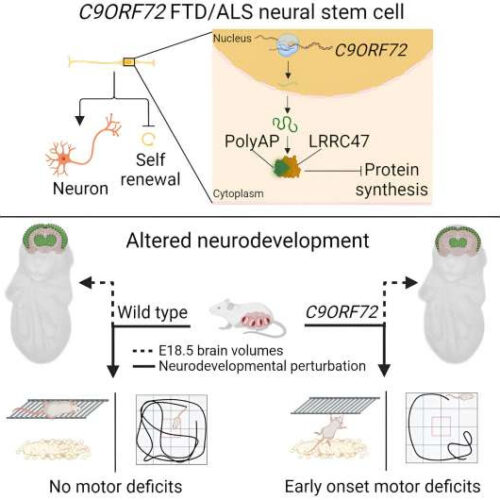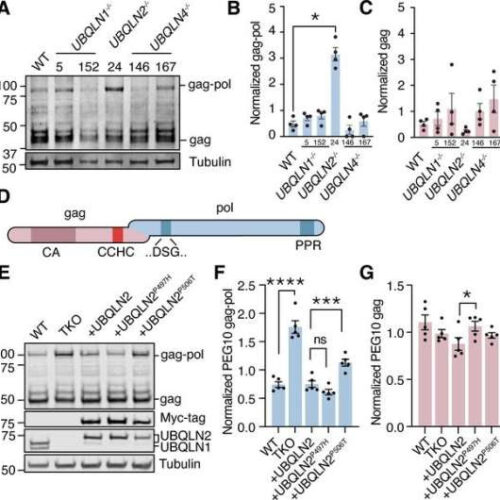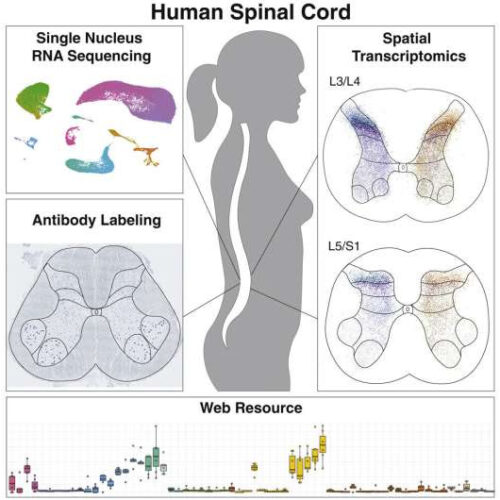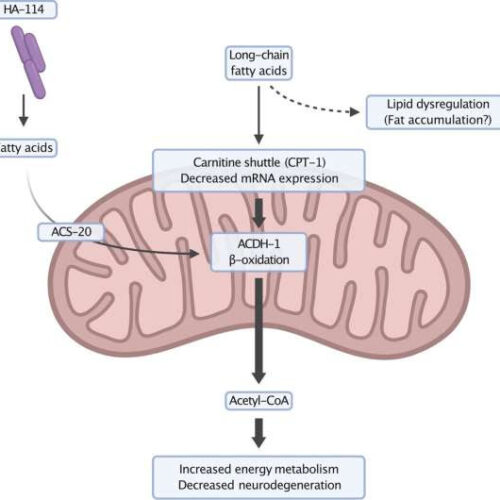Original story from CNIOAccumulation of “junk proteins”: normal cells (left) and cells subjected to the effect of the toxic arginine-rich protein (right). In the latter, ribosomal proteins (green fluorescent) and the size of nucleoli (red) are increased.Credit: CNIO. Amyotrophic lateral sclerosis (ALS) is a degenerative disease. The neurons responsible for movement begin to die and...
Tag: <span>ALS</span>
Recreational activities such as golfing, gardening may be associated with increased ALS risk among men
MICHIGAN MEDICINE – UNIVERSITY OF MICHIGAN Participation in recreational activities — including golfing, gardening or yard work, woodworking and hunting — may be associated with an increase in a person’s risk for developing amyotrophic lateral sclerosis, or ALS, a Michigan Medicine study finds. While many activities were associated with increased ALS risk, several were sex...
New study identifies gene believed to be responsible for ALS and dementia
by Case Western Reserve University Representative human spinal cord tissue imaged at 4X objective for DAPI (blue), CD80 (red), and Iba1 (green) from an C9ORF72 ALS case and a non-ALS control. Scale bars represent 1000 µm or 100 µm as indicated. Credit: Science Translational Medicine (2024). DOI: 10.1126/scitranslmed.adg7895Researchers at Case Western Reserve University School of Medicine...
ALS: blocking inflammation to reduce symptoms
Peer-Reviewed Publication UNIVERSITÉ LAVAL Québec, January 10, 2024 – In people with amyotrophic lateral sclerosis (ALS), changes in neurons appear to activate immune cells. Lowering the inflammation could reduce the symptoms of the disease, according to a study led by Chantelle Sephton, a professor at Université Laval’s Faculty of Medicine. ALS is caused by the...
ALS and frontotemporal dementia show origins in utero, according to new study
by Cristy Lytal, Keck School of Medicine of USC Grpahical abstract. Credit: Cell Reports (2023). DOI: 10.1016/j.celrep.2023.112983 Even though neurodegenerative diseases often strike in middle age or later, patients could have structural differences in their brains that arise before birth. In a new study in Cell Reports, USC stem cell scientists used both patient-derived nerve cells and laboratory mice...
Study raises possibility of immunotherapy treatment for ALS
OREGON HEALTH & SCIENCE UNIVERSITY New research reveals a type of monoclonal antibody already tested in certain forms of cancer may be a promising treatment in stopping the progression of amyotrophic lateral sclerosis, or ALS, a fatal neurodegenerative disease. The study, led by scientists at Oregon Health & Science University, published today in the Proceedings of the National...
Remnants of ancient virus may fuel ALS, says new research
by Lisa Marshall, University of Colorado at Boulder Ubiquilin 2 (UBQLN2) regulates paternally expressed gene 10 (PEG10) gag-pol abundance. Credit: eLife (2023). DOI: 10.7554/eLife.79452 More than 5,000 people are diagnosed annually with ALS (amyotrophic lateral sclerosis), a fatal, neurodegenerative disease that attacks nerve cells in the brain and spinal cord, gradually robbing people of the ability to speak,...
Calming the destructive cells of ALS by two independent approaches
by Northwestern University Credit: Pixabay/CC0 Public Domain Northwestern Medicine scientists have discovered two ways to preserve diseased upper motor neurons that would normally be destroyed in ALS, based on a study in mice. Upper motor neurons initiate movement, and they degenerate in ALS. These neurons have a pathology—called TDP-43 pathology—in which aggregating proteins inside the...
Study identifies features that may make motor neurons vulnerable to ALS
by National Institutes of Health Credit: Neuron (2023). DOI: 10.1016/j.neuron.2023.01.007 New research offers clues about the biology of cells in the spinal cord that die off in amyotrophic lateral sclerosis (ALS) and other neurodegenerative diseases. A team of researchers supported by the National Institutes of Health has found evidence linking motor neurons’ large cell size and supporting...
A protective probiotic for ALS found
by Bruno Geoffroy, University of Montreal Hospital Research Centre Neuroprotection mechanism of Lacticaseibacillus rhamnosus HA-114. ALS models have impaired carnitine shuttle, a mechanism to transport long chain fatty acids across the mitochondrial membrane for energy production via β-oxidation. Fatty acids, supplied by the probiotic bacteria, is believed to enter the mitochondria independently of the carnitine...

